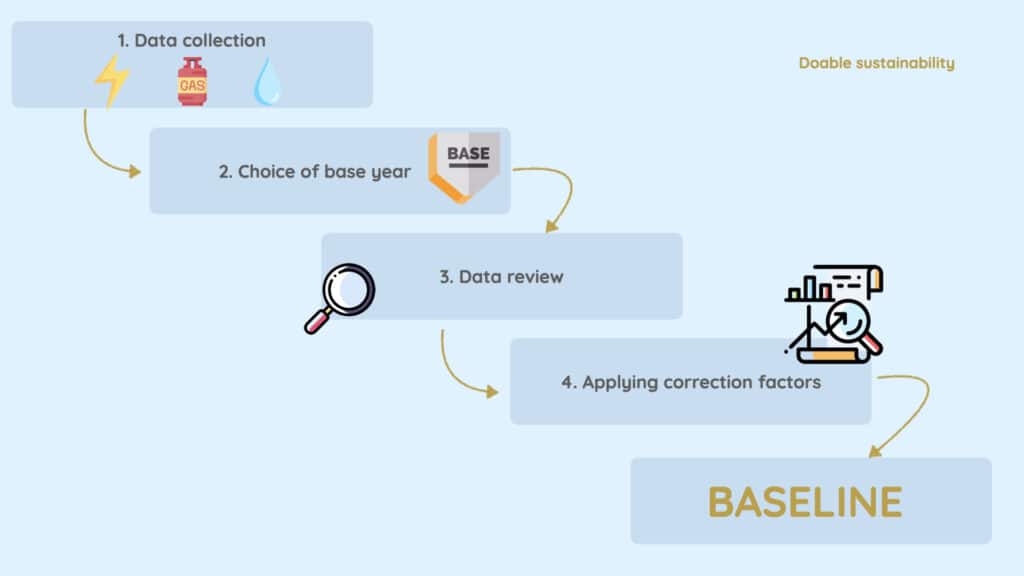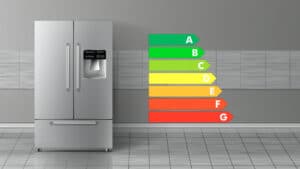Whether you want to apply ISO 16247 (energy audit) or ISO 50001 (energy management system), you will have to prepare, yes or no, an initial information baseline.
Initial data: consumption data
First of all we have to know which are the energy sources that our building or buildings use (gas, electricity, fuel, coal, pellets, water, etc.) and where they are consumed, collect all the information of consumption and use data, both past and present, and finally establish a base year of calculation.
Energy sources and data collection
If you have a centralized management system or a smart meter, this step will be easier because the information can be obtained almost immediately.
If this is not available, collecting all the invoices from the last few years and passing them on to a small database will be indispensable.

vecteezy – visionheldup
Regardless of the method, we must have the following information:
- All meters of all supplies and associated information (Meter number, CUPS, etc.) must be known
- Suppliers of the energy and water points
- Conversion or correction factors for invoices, e.g. conversion factor for m3 of gas kWh. This information comes in the invoice
- All the information in the same units of measurement, i.e. kWh
- List another meter points
Starting point of calculation: base year
The base year of calculation is the starting point for the analysis of the buildings and facilities. Its main function is to serve as a basis for comparison to evaluate the implementation of energy efficiency measures and, in case the expected results are not being obtained, to be able to analyze why.
This base year is usually the most recent calendar year being audited. But this is not always the case, for example, in terms of the application of SDG 7, one of the reference years used is 1900, the base year for carbon emissions calculations.
Baseline Adjustments
Adjustments to the reference year data may be necessary in certain situations to ensure consistency of comparisons. This may occur in the following cases:
- Acquisitions, mergers or divestments affecting buildings
- Errors or omissions in measurement data
- Changes in calculation methodologies or improvements in activity data
- Changes in energy sources (e.g. replacement of fuel equipment with a cogeneration system)
- Replacement of equipment or modifications in the production process, e.g. expansion of equipment
Incomplete data , what to do?
In any case, we will have to apply corrections to our data. Although there is no single way to estimate data, you should certainly use a methodology that gives reasonable results (e.g., assumptions, calculations, known versus estimated data), and you should also document the procedure used.
Of the most used work strategies are:
- Technical estimates
- Obtaining backup data (back up of measurements, etc)
- Standardization of data from the months or years prior to the unit and application of that information with the production information of the period that is missing to estimate the information
- Application of regression analysis for one or more metrics over an extended period of time when data are available to estimate missing information
- Use of generally accepted estimation techniques (e.g., online calculators or industry-specific defaults)
In the case of building acquisitions, mergers or divestments, the adjustment of the baseline data will be considered if they occurred during the reference year. If these events occur after the base year, the baseline should not be changed.

Vecteezy – Daniel Campos
Obtaining information on the use of the facilities
In addition to the above and completing missing data, errors, etc., the following information should also be obtained and the corresponding correction factors applied if appropriate:
- working hours and operation of buildings and equipment
- calendar of annual and company-specific events that affect energy consumption, e.g., December 25th is the closing date
- Detailed and updated inventory of consumer equipment (large energy consumers, computer equipment, etc.)
- number of employees, students or customers usually in each building
- other special uses
Climate corrections
Finally, we must consider the climatic variations as one of the causes on which the energy consumption depends. That is to say, colder years imply a higher consumption of heating and hot water than warmer years. In the same way, years with higher temperatures will also increase the consumption of electricity due to the application of fans or air conditioning.
For this purpose, the baseline should be as neutral as possible and climate-related correction factors should be applied. It is useful to use statistical climate data usually provided by the official meteorological sites of each country.

Source: Own elaboration – Doable sustainability
References & Resources
- EPA (June 2019), Guidebook for Energy Efficiency Evaluation, Measurement and Verification
- Directive 2012/27/EU of the European Parliament and of the Council of 25 October 2012 on energy efficiency
- Researchgate (January 2005) Eurocontract: Guaranteed energy performance: Standardised energy services for Europe’s buildings
- Researchgate (June 2000) An initial view on methodologies for emission baselines: energy efficiency case study
- Unplash – Jukan Tateisi
- Vecteezy – Visionheldup – Daniel Campos
- Flaticon – Freepik




Comments
finest article
Author
Thanks a lot, Dee